Do you want to join an adventure through art, nature and archaeology discovering Lazio and its most beautiful attractions? If you are planning your next trip, looking for unique experiences and emotions, today we propose you to visit a gem together right in the heart of this beautiful region, halfway between Rome and Viterbo. Our destination is Calcata, also known by the evocative nickname of village of artists.
An unmissable location to explore and love, crossing relaxing nature itineraries, interesting archaeological sites and fantastic open-air art museums (and with lots of other fantastic places to visit nearby!). Wonderful, isn’t it? So let's set off for the village of artists right away and discover with us what to see in Calcata!
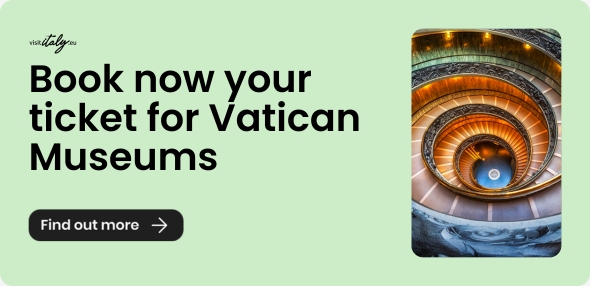
Calcata: where it is and how to get there
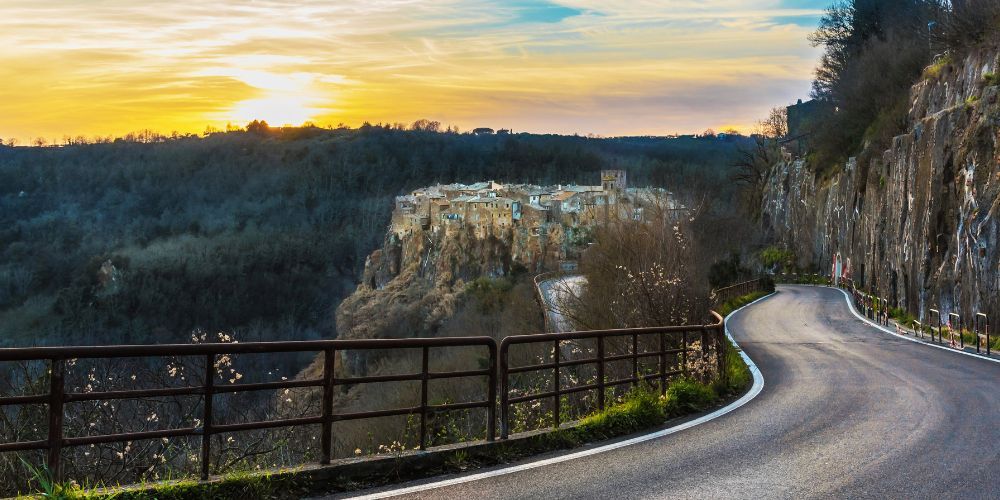
The village of Calcata is located in the southern area of the province of Viterbo, on the border with the metropolitan city of Rome, and today counts less than 1000 inhabitants within the two sections this little town is made of: Old Calcata, perched on top of the iconic spur of tuff rock overlooking the Treja valley, and New Calcata, which developed in the hinterland on a flatter ground.
From a geographical point of view Calcata is perfectly located halfway between Rome and Viterbo, about 50 km away from both cities, representing a perfect destination for a day-trip in the surroundings of the Capital.
To get to Calcata by car, whether you set off from one city or the other, you have to take the SR2 road as a reference point, and in particular the junction near Settevene; from here proceed following the signs to Mazzano Romano (SP37, SP16b) and finally to Calcata (SP17b). If you don't have a car, you can alternatively get to Calcata using public transport (bus) on the same route.
Traveling to Lazio in search of emotions? Click the button below to check out Visit Rome Pass, the most comfortable and convenient way to best experience the Eternal City, the ideal solution for a weekend or a whole week!
Book now your Visit Rome PassWhat to see in Calcata, a village made of art, nature and archaeology
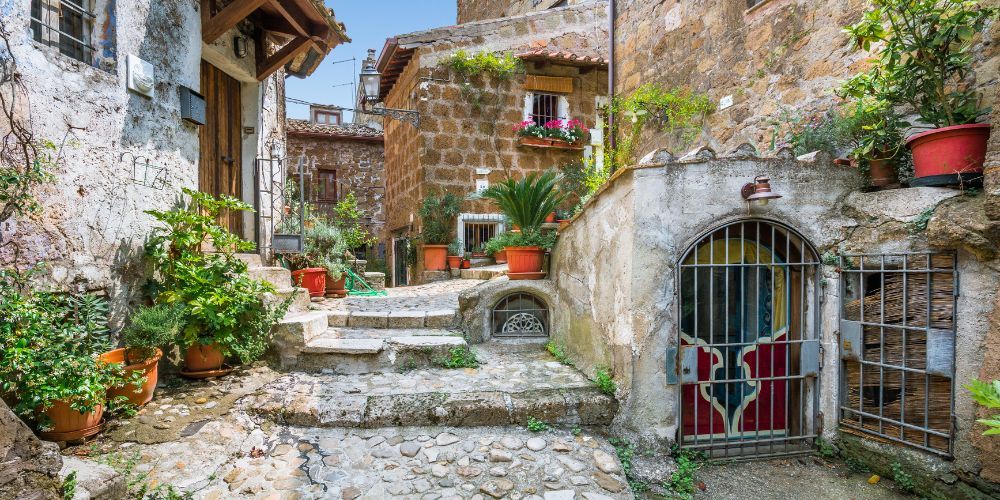
Once arrived in Calcata you can’t avoid being struck first by the sight of its ancient medieval village, apparently hanging between heaven and earth on the top of the tuff hill surrounded by greenery. A glance that leaves speechless everyone who is not used to such views, where nature and human work blend harmoniously achieving perfect synergies, for example as it happens in Civita di Bagnoregio too.
Further on, in the next paragraph, we will find out more about the unsafe position of the historic center of the village of the artists and how this has influenced the build of its current reputation. But now it's time to find out what to see in Calcata!
The most iconic building to see and visit in Calcata is certainly the Baronial Palace of Anguillara, also known as Calcata Castle and dating back to around the year 1000, whose high crenellated and squared tower stands out in the panorama of the village. For centuries this building was the place of power in the city, serving first as a residence for the local lords and later as a town hall, while nowadays its chambers house the administrative offices of the Treja Valley Park.
Right after the castle there is the Church of the Holy Name of Jesus, a 1300s building which houses some important ornaments and artistic artifacts of the period including a pictorial cycle dedicated to the history of Christ. According to legend, this church also housed a relic belonging to Jesus himself before being lost forever.
The museum of rural civilization is also worth a visit, a permanent public exhibition with free access in the former Church of San Giovanni where it is possible to rediscover the rural origins of the territory with over 500 tools which for centuries have been the symbols of domestic life and of the work of the population of Calcata.
However, as we know, in Calcata the real protagonists are the artists with their freaking lives and the fantastic works of art resulting from their creativity...do you want to know more? See you in the next paragraph!
Why is Calcata called the village of artists?

Calcata, and in particular Old Calcata, today is considered one of the most iconic and beautiful villages in Italy and boasts the curious reputation of village of artists. But why? As anticipated, the answer to this question lies in the very conformation of the village and its recent history.
Given its risky position on the top of a rocky spur overlooking the Treja valley, in the fascist era Calcata was in fact declared too risky and unsafe and subsequently depopulated, eventually leaving the ancient medieval village completely uninhabited. About thirty years later, in the middle of the 1960s Calcata was considered a sufficiently safe place to live in once again, going through a real renaissance thanks to the arrival of new unusual citizens...
Who? Artists of all sorts, artisans and even hippies, free and brilliant minds from all over the world and immediately attracted by the possibility of living in a place with such ancient and forgotten charm, far from the hectic world of the big cities (where even telephone networks and the Internet struggle to work!). In short, a place to find inspiration and best cultivate creativity.
If you are wondering what to see in Calcata by exploring the alleys and squares of the village of artists, get ready to discover beautiful and picturesque views like artisan shops and artistic exhibitions, small cultural centers dedicated to literature and music and even an amazing tea hall overlooking the Treja valley, where to taste many varieties of this drink.
What to see in Calcata: an open-air museum in nature
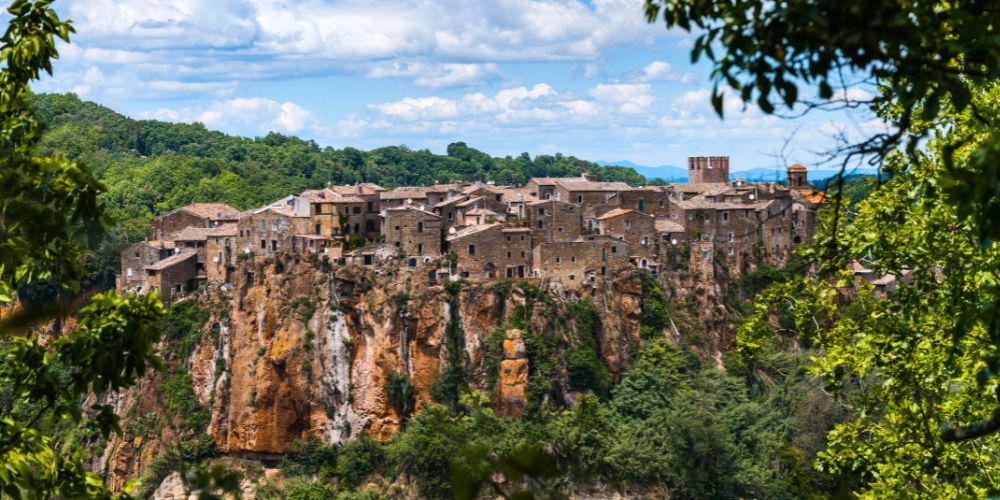
In short, Calcata is truly a small and enchanting open-air museum to discover, alley after alley. But the magic of art, right here in the charming village of artists, is not limited to the historic centre enclosed between the ancient walls overlooking the Treja valley. It's time to move to Località Colle just north of Calcata Nuova and discover Opera Bosco, a real museum of art in nature, of nature and for nature.
Founded in 1996 by Anne Demijttenaere and Costantino Morosin, this experimental open-air museum and laboratory has always pursued an ideology of respect and care for the environment and ecosystem aesthetics, in particular making the natural landscape simultaneously both artistic frame and content. In fact, all the works of art to admire in the museum tour were created starting from raw natural materials collected in the territory, according to an interesting and virtuous artistic canon that could be defined as ecological art.
Visiting Opera Bosco in Calcata is an unparalleled sensory experience, a moment of tranquility where to discover the connection with Mother Nature once again in a landscape framed by greenery and enriched by the thousand shapes, colors and scents of ecological works of art to enjoy during this wonderful adventure. Among the most iconic attractions of the open-air museum, present since day one, Il Teatro di Pan by Demijttenaere and Fonte Viva by Morosin stand out.
Calcata and the nature itineraries across the Treja valley
Speaking of natural beauties, in Calcata and its surroundings it is a must to venture out discovering the lush natural park of the Treja valley, a protected area of over 600 hectares along the border between the provinces of Viterbo and Rome following the flow of the namesake river, a tributary of the Tiber.
The entire territory of the park has a clear natural awesomeness and is characterized by its wild landscape, made up of rocky ground, thick woods and above all beautiful small waterfalls formed by the waters of the Treja in some particular points of its route. Among these, especially the waterfalls of Monte Gelato stand out, among the most loved summer tourist destinations in the area for hiking enthusiasts, a true all-natural artistic masterpiece that has absolutely nothing to envy of the most incredible fantasy landscapes.
Calcata is also one of the most beautiful and important stages of the nature itineraries in Lazio, a journey to be undertaken on foot or by bike through the wonderful river landscapes of the region, to discover its villages and its green wonders. Specifically, Calcata is part of the route Le Strade dei Parchi (The Roads of Parks), exploring the entire territory between Treja and Tiber starting from Settevene to get to Civitella San Paolo, obviously crossing the village of artists too.
Alternatively, just west of Calcata you can also explore the fascinating lakes of Bracciano and Martignano and their beautiful natural park, with the possibility of going on horseback hikes.
Old Calcata and the archaeological area of Narce
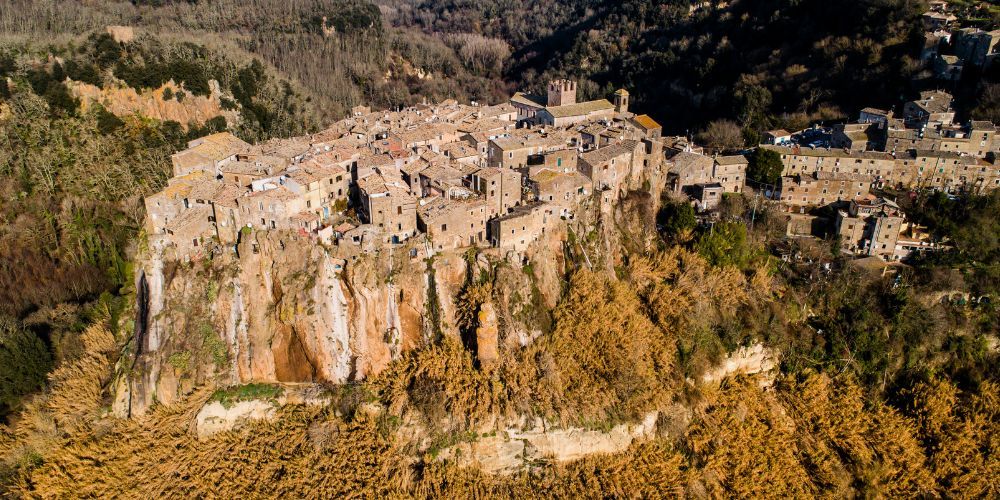
If you are fascinated by ancient history and feel the adrenaline flowing through your whole body while exploring old ruins, then here in Calcata and its surroundings you will find more than just spectacular natural attractions and lots of art, but even some very interesting pre-Roman archaeological sites to immerse yourself in the pleasure of discovering Lazio's civilizations that preceded the golden age of Rome.
In particular, just south of Calcata stands the archaeological area of ancient Narce, probably an Etruscan or Faliscan city which according to experts developed during the Bronze Age, representing an important cultural crossroads given its strategic geographical position in this territory rich in natural resources and passage routes through the rocky hills that characterize the local landscape.
The site of Narce is also closely linked to the sanctuary of Monte li Santi and the tombs of Pizzo Piede, respectively a sacrificial temple and one of the many necropolises located in the archaeological area near Calcata, where many finds of great historical-cultural importance have been found, including ceremonial helmets, pottery and ceramics, as well as jewelry and Greek artifacts.
You're interested in archaeology? Click the button below to find out how to best visit the incredible Etruscan archaeological park of Sutri just 30 minutes far from Calcata!
Book now your Sutri PassWhat to see near Calcata
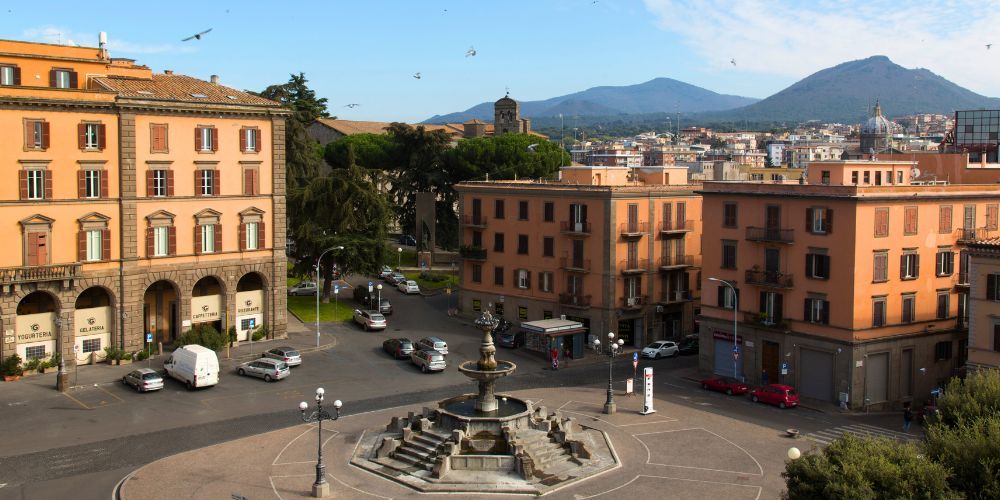
This beautiful trip to the village of artists of Calcata and its surroundings, ends here, unfortunately. But our journey doesn’t stop and the next place we suggest to visit together is Viterbo, the provincial capital and historic city of the popes, also known for its proximity to some of the most important thermal baths in Lazio.
Click the button below to check out Viterbo Pass, your perfect travel passport to enjoy your visit and explore the best of the historic centre of the city of Tuscia with fast access to its most important attractions!
Book now your Viterbo PassAbout the author
Written on 19/04/2024

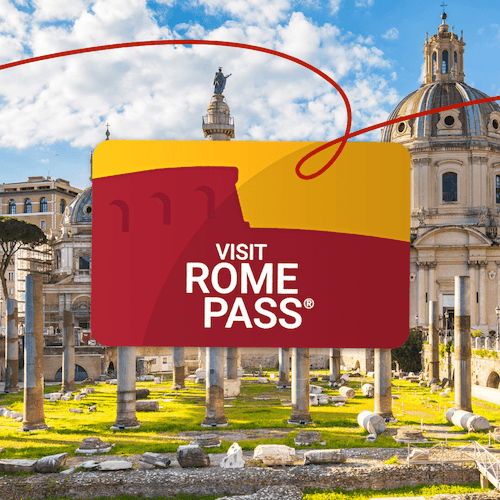
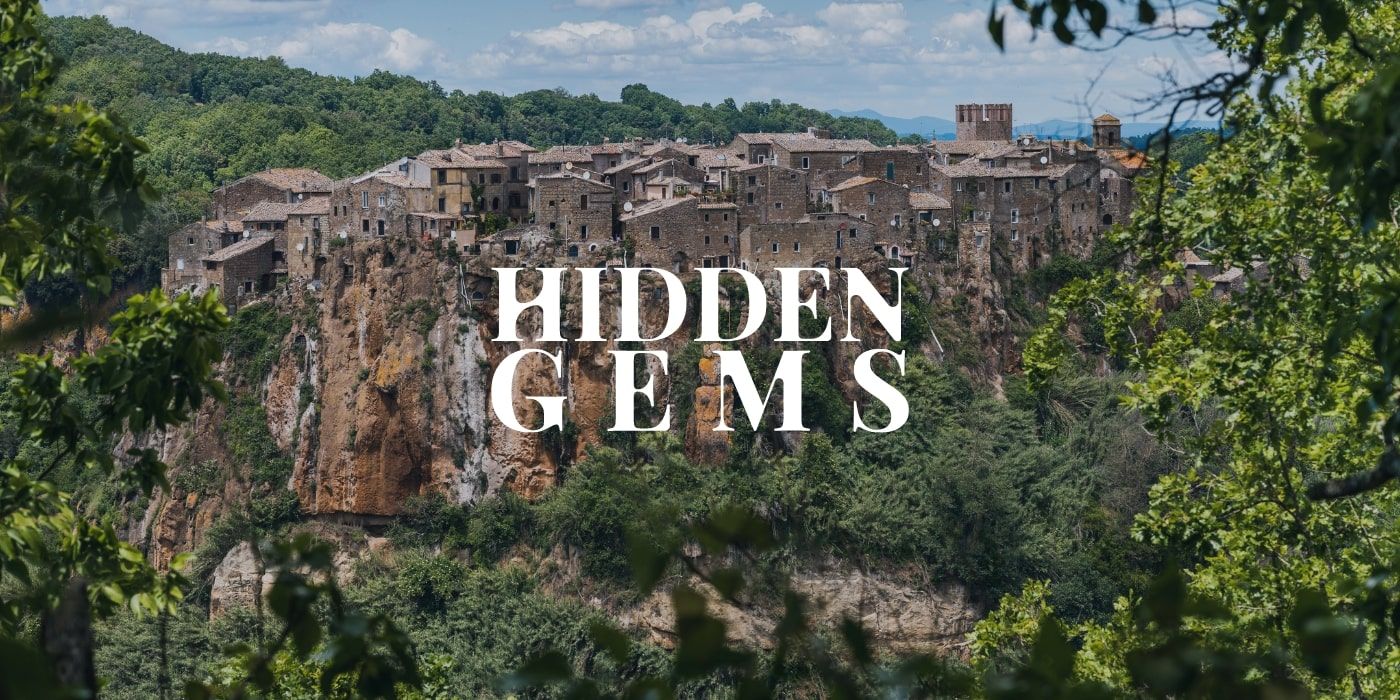
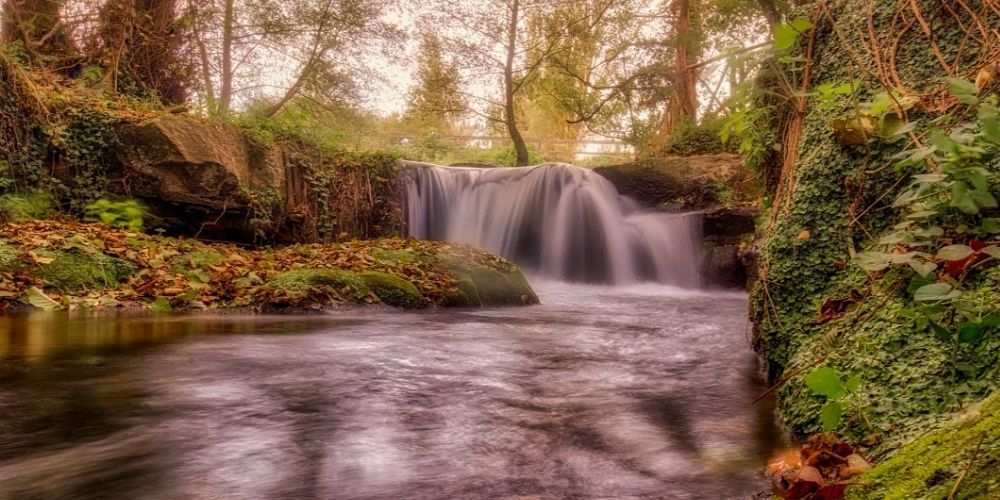

Massimiliano Antonio Primi
Let’s find out what to see in Calcata, iconic and evocative village of artists to discover on your next trip to Lazio through nature and archaeology.